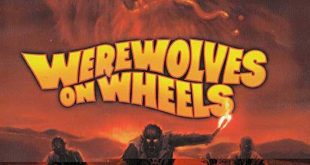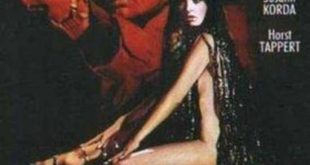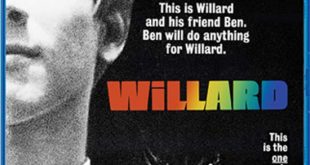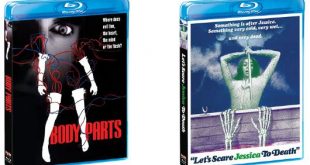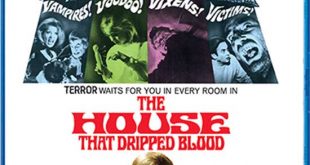
SYNOPSIS:
A woman recently released from a sanitarium hopes to start a new life in a quiet town with her husband and their mutual friend, only to discover that the world she thought she knew does not exist. Is what is happening really happening? Or is it all in her mind?
REVIEW:
In the history of cinema, it is a known fact that the producers and director of a film all have their own opinions about what a finished film should be called. Movies generally use a working title which rarely ends up being used upon release. Even the film’s own writer invariably believes that it is his/her title that should be used with consideration given to no one else. One can only wonder how Steven Spielberg’s E.T. The Extra-Terrestrial (1982) would have fared at the box office had it been marketed under its original A Boy’s Life. Ridley Scott’s initially panned and now revered science fiction masterpiece Blade Runner (1982), its title taken from a 1979 novella by William S. Burroughs, would have found difficulty being displayed on movie marquees had it gone by the jaw-breaking title of the 1968 Philip K. Dick novel upon which it was based, Do Androids Dream of Electric Sheep?
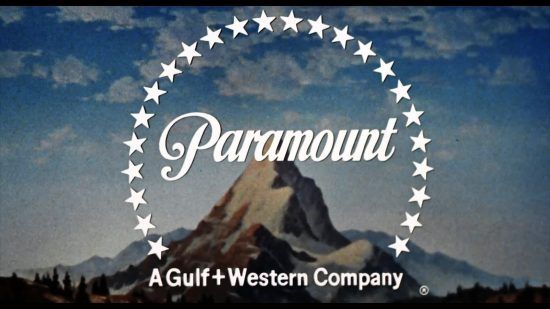
The Satanists was one of the original titles considered for the film that would eventually be called Let’s Scare Jessica to Death, a beautifully understated piece of filmmaking shot in October 1970 in Connecticut and released in New York on Friday, August 27, 1971 two months prior to a rollout in suburban theatres and drive-ins and its eventual ABC-TV premiere on Friday, March 11, 1977 before becoming a staple of late-night television airings. The 1970’s are a by-gone era which followed the end of the studio system of contracts and obligations and gave way to films that relished originality of thought and style, permitting both novice and seasoned filmmakers the freedom to make the kinds of films that they wanted to make for distribution through major studios. This maneuver was driven by two factors: the desire to make money and film studios not knowing what would bring in the crowds.
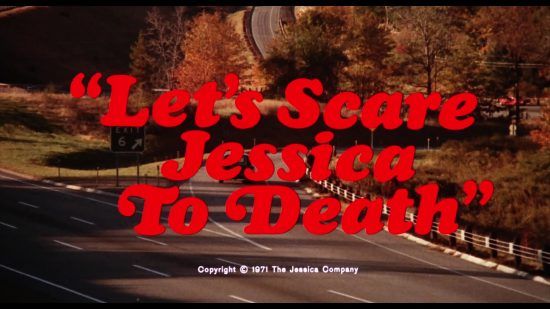
Let’s Scare Jessica to Death was coined by executives at Paramount Pictures and the title’s aggressiveness suggests far more action that the film actually delivers. Jessica is far from a cinematic triumph, however when it succeeds it is evocative of the creepiness of Herk Harvey’s Carnival of Souls (1962) both in its use of elliptical narrative storytelling and mood and also benefits from a thematic touch befitting of an episode of Rod Serling’s The Twilight Zone. The titular heroine is portrayed by veteran actress Zohra Lampert of Splendor in the Grass (1961) fame in a nuanced performance of a woman recently released from a sanitarium (when was the last time you heard that word?). The start of the film finds her motionless in a boat, her voiceover indicating to the audience that something awful has happened. The film proceeds in flashback with Jessica preparing for a quiet but charmed life in the country with her husband Duncan (Barton Heyman who played Dr. Klein in 1973’s The Exorcist) and their mutual friend Woody (Kevin O’Connor) in an immense old manse sporting a turret. A brief stop at a cemetery finds Jessica hearing strange whispers while garnering tombstone rubbings on tracing paper and later displaying them in the room she shares with Duncan. Emily (Mariclare Costello) is an odd house squatter coming on the heels of the Free Love Sixties, an itinerant musician who befriends the new homeowners and encourages them to perform a séance during which Jessica continues to hear voices in her head. They persuade Emily to stay and she is thrilled.
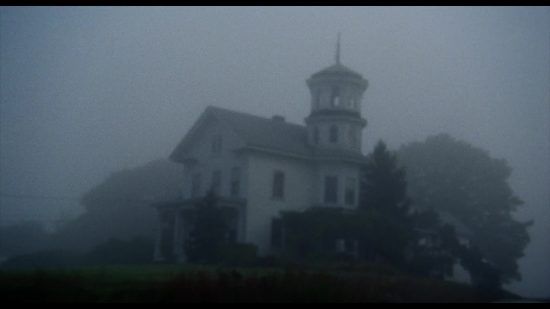
Unbeknownst to them, Emily has stayed for much longer than any of them are aware, and her image and likeness is seen in an old framed photograph Jessica finds in an afternoon sojourn into the largest attic I have ever seen. A local antique store dealer informs them that the house used to belong to Abigail Bishop, a woman who drowned in the lake near the house 90 years earlier. Disturbed by this information, Jessica begins to experience things that make her question her sanity again. It isn’t long before we realize that Emily has made a deep impression so-to-speak on the townsfolk who all stand around with bandages around their necks, covering deep scratches.
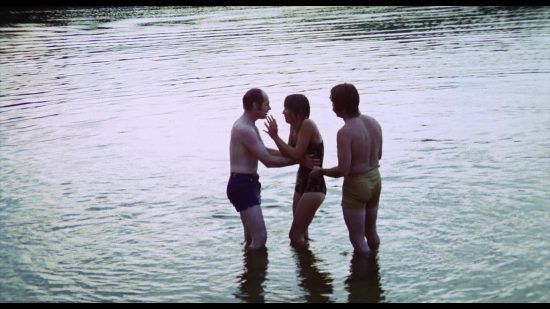
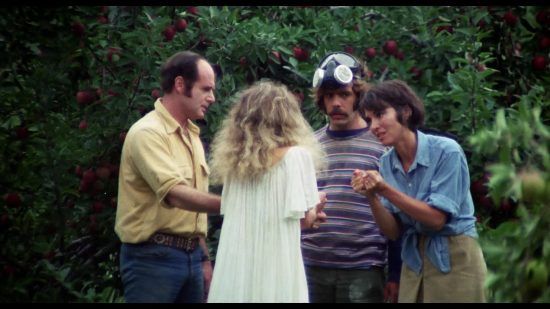

Inspired by the 1898 novella The Turn of the Screw by Henry James (which itself inspired the wonderful 1961 Jack Clayton adaptation The Innocents with Deborah Kerr), Jessica thrives on moments where the audience is forced to ask themselves if what is happening is really happening, or if it’s only happening in Jessica’s mind. The film benefits from a slow and deliberate build-up of mood and atmosphere. Orville Stoeber provides a wonderfully creepy score which, like Stephen Lawrence’s brilliant music for Alfred Sole’s masterful Communion/Alice, Sweet Alice/Holy Terror (1977) is unfortunately still not available on a soundtrack album. Cinematographer Robert M. Baldwin bathes the film frame in autumn foliage and employs the use of slow camera moves to enhance the film’s overall mood. The film is far too slow for today’s audiences, but for those with a mindset for 1970’s horror, Jessica fits the bill. I was too young to see it when it was initially released, however it played at a long-ago demolished theatre that used to sit three miles from where I grew up. I am envious and jealous of the audiences who saw this on Halloween in 1971!!

Jessica is one of those titles I have been wanting to see in a much-needed home video upgrade. A bare-bones DVD was released by Paramount Home Video in 2006 sporting a mediocre cover and now the amazing people at Scream Factory (an imprint of Shout! Factory) have released the film on Blu-ray with a considerably improved transfer. There is a welcome feature-length audio commentary with producer Bill Badalato and director John Hancock, who is arguably best known for the Robert De Niro vehicle Bang the Drum Slowly (1973) outside of Jessica fame. They offer many memories about the making of the film, one of which is Mr. Hancock’s recollection of lifting the voiceover device of Eleanor Lance (Julie Harris) in Robert Wise’s The Haunting (1963) to make the audience identity more with Jessica. The other extras include:
Art Saved My Life: Orville Stoeber on Let’s Scare Jessica to Death – this runs 16:25 and consists of an interview with the film’s music composer who describes growing up all over the world and how his family influenced his musical impressions.
Scare Tactics: Reflections on a Seventies Horror Classic – runs 23:44 and is an interview with author and critic Kim Newman who explains why Jessica is his favorite horror film.
She Walks These Hills: Let’s Scare Jessica to Death Locations Then and Now – this runs 6:48 and takes us to the First Church Cemetery in East Haddam, CT; the “Selden III” Hadlyme Ferry in Chester, CT; the Pattaconk Reservoir in Chester, CT; the Bishop House in Old Saybrook, which is beautiful but completely dilapidated, even more so than when I visited it in 2006. I really wish that someone would buy it and restore it; and Main Street and Maple Street in Chester, CT (Devoe Paints was still there in 2006, but is gone now and the building is for rent).
Theatrical trailer – a very creepy promo for the film that runs three minutes
Television spot – this runs 53 seconds and, like the theatrical trailer, gives away much of the plot while trying to be creepy.
Radio spot – this is derived from the mini record that was dispatched to radio stations to play over the air and runs 60 seconds. Creepy!
Thankfully, the film’s creepy original key art has been reinstated for the cover of the Blu-ray, unlike the 2006 DVD cover.
Jessica is a film that is bathed in moments of eeriness and supernatural detachment thanks in part to screenwriter Lee Kalcheim whose former student, film director Bryan Norton, tipped his hat to the film by making the film’s title the byline for his excellent short film Penny Dreadful (2005).
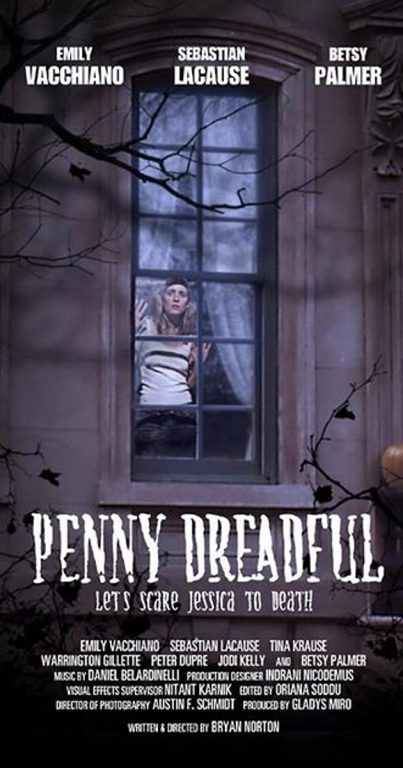
Click here to purchase from Amazon.com
 Horror News | HNN Official Site | Horror Movies,Trailers, Reviews
Horror News | HNN Official Site | Horror Movies,Trailers, Reviews
